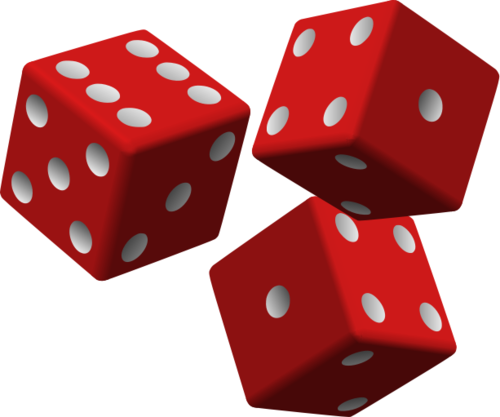Dice O' Dice!
 Find the probability of getting at least two
in a roll of three
dice. Suppose the answer can be expressed as
Find
.
Find the probability of getting at least two
in a roll of three
dice. Suppose the answer can be expressed as
Find
.
You can try My Other Problems .
This section requires Javascript.
You are seeing this because something didn't load right. We suggest you, (a) try
refreshing the page, (b) enabling javascript if it is disabled on your browser and,
finally, (c)
loading the
non-javascript version of this page
. We're sorry about the hassle.
Rolling a die will have 6 possible outcomes {1, 2, 3, 4, 5, and 6}. By Multiplication Rule of the Counting Principle , the number of elements in the sample space in rolling three dice is
n ( S ) = 6 × 6 × 6 = 2 1 6
The probability of getting at least two 4's is the probability of getting two 4's or getting three 4's. These two events have no elements in common.
A- be the event of rolling two 4's. B- the event of rolling three 4's.
Event A: The list of outcomes of getting two 4's in rolling three dice: {(1 4 4), (4 1 4), (4 4 1), (2 4 4), (4 2 4), (4 4 2), (3 4 4), (4 3 4), (4 4 3), (5 4 4), (4 5 4), (4 4 5), (6 4 4), (4 6 4), (4 4 6)}
n ( A ) = 1 5
P ( A ) = 1 6 1 5
Event B: There is only one way of getting three 4's in rolling three dice, that is {(4 4 4)}
P ( B ) = 1 6 1
Therefore, the probability of getting at least 2 4's is:
2 1 6 1 5 + 2 1 6 1 = 2 7 2
Hence, a = 2 and b = 2 7 . a + b = 2 9